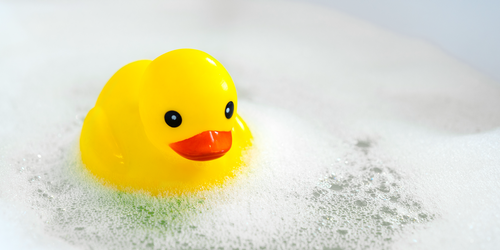How Soap Molecules Move Over Water
When a tiny drop of soapy water falls onto a pool of liquid, its contents spread out over the pool’s surface. The dynamics of this spreading depend on the local concentration of soap—which varies in time and is difficult to predict—at each point across the entire pool’s surface. Now Thomas Bickel of the University of Bordeaux in Talence, France, and François Detcheverry of the University of Lyon, France, have derived an exact time-dependent solution for these distributions [1]. The solution reveals surprisingly rich behaviors in this everyday phenomenon.
The duo considered a surfactant-laden drop spreading over the surface of a deep pool of fluid. Researchers have previously shown that the equations governing the transport of the surfactant particles can be mapped to a partial differential equation known as the Burgers’ equation, which was initially developed to describe flows in turbulent fluids.
Bickel and Detcheverry solved the Burgers’ equation for their system for a variety of different initial conditions. They found that the time dependence of the spread was sensitive to the surfactant’s initial distribution on the pool’s surface, such that the higher the initial surfactant concentration, the faster the spread occurred.
According to the duo, their findings show that the spreading of surfactants over a liquid surface does not always match what is expected for a simple diffusion process as other researchers have previously suggested. Rather, it is a rich and complex phenomenon. In the future, Bickel and Detcheverry hope to see their predictions experimentally tested.
–Sophia Chen
Sophia Chen is a freelance science writer based in Columbus, Ohio.
References
- T. Bickel and F. Detcheverry, “Exact solutions for viscous Marangoni spreading,” Phys. Rev. E 106, 045107 (2022).




